Vernon Coleman and Germ Theory
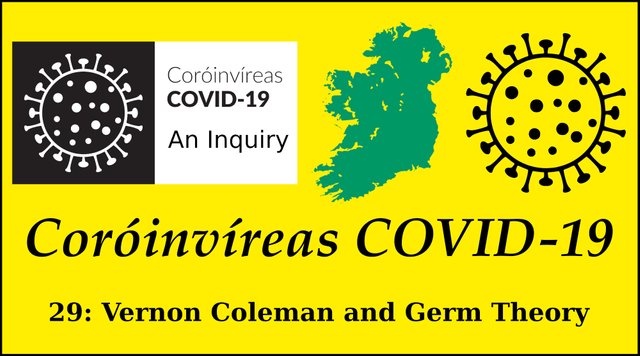
In the last article we looked at Vernon Coleman, a vocal opponent not only of those who support the official covid narrative but also of those who promote terrain theory and insist that pathogenic germs and viruses are not real. On more than one occasion Coleman has promised to present the case for germ theory, but he has yet to deliver on any of these promises. The latest appeared on his website on 24 March 2023:
(I’ll publish an analysis of the opposition to germ theory within the next week or so—depending upon the progress of World War III.)
Unfortunately, World War III has been in full swing, so no analysis has appeared as of 23 April. In the meantime, however, we can take a look back at some passing remarks—obiter dicta, if you like—on the subject of germ theory which Coleman made in an earlier presentation.
On 18 February 2022, Coleman released a video entitled Don’t Let Them Kill Kids. This is primarily a polemic against two prominent promoters of the covid vaccines—John Campbell, who has since changed his mind on this issue, and Devi Sridhar—but Coleman concludes with an attack on terrain theorists:

We have to fight this together. Injecting poison into children is as bad as anything Mengele ever did. It is evil beyond comprehension. And we all have to fight it together. I am tired of the constant abuse from those who don’t believe in germ theory. Maybe they will put aside their irrelevant hatred of the germ theory for a moment and just concentrate on the important stuff – the prospective jabbing of young children.
Incidentally, here are a few simple questions for those who deny the existence of the germ theory. No one has questioned the medical establishment for longer than I have but these people insist on threatening me with simple abuse and with physical violence because I’ve tried to share facts about covid.
Without the germ theory, how do you explain why people in Broad Street stopped dying of cholera when Dr John Snow took the handle off the water pump?
How do you explain why so many people with infections get better if you give them antibiotics—and die if you don’t?
Why do fungal or vaginal skin infections disappear when anti-fungal cream is applied?
Why was Typhoid Mary such a threat?
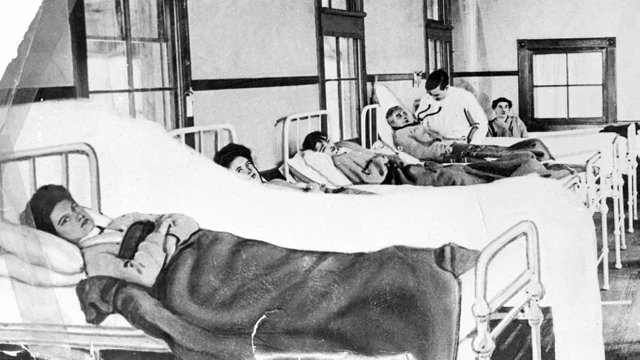
Would you be happy to be operated on by a surgeon who sharpened his knife on the sole of his shoe—as they used to do?
How come smallpox was conquered not by vaccines—as the drug companies would have you believe—but by quarantine?
Why did operating theatre mortality rates decline when surgeons started to wash their hands? What about Semmelweiss [sic]?
There isn’t time for distracting, academic discussions about theories. This is a time for fighting for the children. (Coleman)
Dangerous Versus Pathogenic
It appears from these objections that Coleman believes that those who contest germ theory do not believe in harmful microbes. But is this true? I cannot speak for all terrain theorists, but I at least do not claim that there are no harmful microbes—microbes that can cause disease and even death. I simply claim that there are no pathogens: that is to say, none of these potentially harmful microbes have been engineered by nature to seek out hosts, prey upon them, infect them, make them sick, kill them, and spread contagiously to other hosts. The idea that nature and evolution would design parasitic microbes in such a way that either the microbe kills the host or the host kills the microbe makes no sense to me. That is not how nature works. Successful parasites do not kill their hosts. In fact, the most successful parasites have as little impact as possible upon their hosts. It is not in their interest to trigger the host’s defense mechanisms.
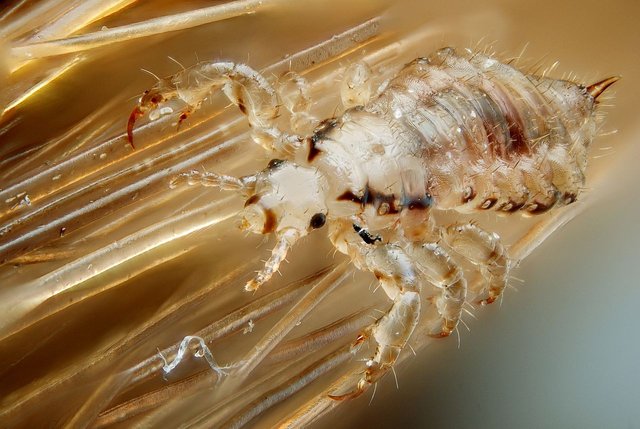
A parasite that deliberately kills its host, or incites its host to kill it first, would quickly become extinct. How can a pathogen multiply and spread if its host is dead? How can a pathogen multiply and spread if its host has killed it? Both outcomes represent a dead end for the pathogen. Evolution would not favour such an organism.
All the microbes Coleman refers to in his objections are not meant to be inside us, causing harm. They are not trying to get inside us. They do not want to be inside us. If they end up inside us, it is entirely by accident. Being infected by, say, Vibrio cholerae, the bacterium that allegedly causes cholera, is the epidemiological equivalent of the Earth being hit by an asteroid, or the eruption of a supervolcano. It is an extraordinarily rare accident that is highly unlikely to happen—but when it does, it can have dire consequences for all involved.
Contrast this with, say, the manner in which plants are engineered by nature to “trick” insects into pollinating them, or to “trick” birds into disseminating their seeds. When a bee picks up pollen from the stamen of one flower and delivers it to the pistil of another flower of the same species, that is not an extraordinary bit of good luck on the plants’ part. Millions of years of evolution have equipped plants to increase the probability of something like this happening to the point where it is a dead certainty. Flowering plants have been meticulously designed by nature to exploit other organisms in this manner in order to ensure their own survival. If this were not the case, flowering plants would have become extinct long ago.
But microbes like Vibrio cholerae are not dependent on infecting us in order to survive. In fact, if these bacteria do infect a human—as may happen if a human drinks water contaminated with the bacteria—it is a death sentence for the microbes. Either they kill the infected human, in which case they too will die, or the infected human will kill them. No matter who wins this battle, it is the end of the line for the bacteria. They would be much better off if they were still in the contaminated water. That is their natural environment. That is where they flourish. That is where they want to be.
Some terrain theorists go much further than this. Following Antoine Béchamp, they hypothesize that even these so-called pathogenic bacteria do not infect us from without, but are produced within our own bodies as part of our bodies’ defense mechanisms. Blaming Vibrio cholerae for cholera, they claim, is like blaming firemen for fires. Is there any truth to this?
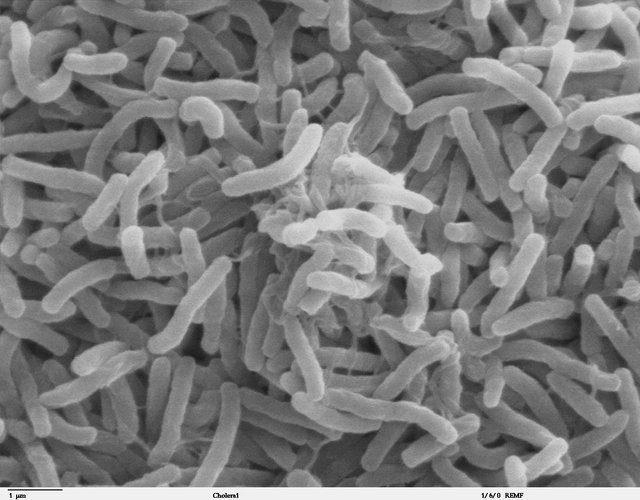
Flesh-Eating Bacteria
Necrotizing fasciitis, or flesh-eating disease, is a bacterial infection that results in the death of parts of the body’s soft tissue. I do not think terrain theorists deny that such bacteria exist, or that there can be very dire consequences if they get inside your body. I certainly don’t deny any such thing. But if germ theory were correct, flesh-eating bacteria actively would prey upon victims. This is simply not the case. MRSA—Methicillin-resistant Staphylococcus aureus—is the commonest form of flesh-eating bacteria. But this is actually a very common strain of bacteria, and it is only under exceptional circumstances that it poses any threat to us:
In humans, Staphylococcus aureus is part of the normal microbiota present in the upper respiratory tract, and on skin and in the gut mucosa. However, along with similar bacterial species that can colonize and act symbiotically, they can cause disease if they begin to take over the tissues they have colonized or invade other tissues; the resultant infection has been called a “pathobiont”. (Wikipedia)
Typically, the infection enters the body through a break in the skin such as a cut or burn. Risk factors include poor immune function such as from diabetes or cancer, obesity, alcoholism, intravenous drug use, and peripheral artery disease. It does not typically spread between people. (Wikipedia)
MRSA (methicillin-resistant Staphylococcus aureus) is a type of bacteria that usually lives harmlessly on the surface of the skin. But it can trigger a serious infection if it gets inside the body. (National Health Service)
A particularly harrowing case of necrotizing fasciitis is that of Aimee Copeland, a 24-year-old woman who cut herself on some rocks while ziplining over a river in Georgia in 2012. The line snapped and Copeland fell onto some sharp rocks, where she sustained a large gash in her left leg. The wound became infected with flesh-eating bacteria that had been living on the surface of the rock. Copeland’s life was saved but only at the cost of multiple amputations. She lost both her hands, her right foot, and her left leg.
Flesh-eating bacteria do not actually eat flesh. They release toxins that poison the tissue, leading to gangrene.
More than 70% of cases of necrotizing fasciitis occur to people with one or more of the following risk factors: a compromised “immune system”, diabetes, alcoholism, drug abuse, smoking, malignancies, and chronic systemic diseases. But for reasons that are still unclear it occasionally occurs in people with none of these factors. Copeland was young, healthy and athletic, but the serious injury she sustained when she fell meant that her immune system was compromised. She was simply the victim of an extremely unfortunate sequence of events. If she had merely grazed her leg, only a small number of microbes would have penetrated her skin barrier and they would have been quickly neutralized by her body’s defense mechanisms. But the wound she sustained was serious and resulted in a significant number of the bacteria entering her blood system. Her body’s defenses—already overstretched by the serious injury she sustained—were simply overwhelmed.
The microbe in Copeland’s case was Aeromonas hydrophila, a strain of rod-shaped bacteria that is typically found in warm, aquatic environments. Aeromonas is usually harmless to humans. In healthy people, the most common clinical manifestations are diarrhoea and soft tissue infections. In people with compromised immune systems or liver disease, Aeromonas hydrophila can cause meningitis, endocarditis, peritonitis, hemolytic-uremic syndrome, or septicemia. But necrotizing fasciitis is extremely rare.

The point is that Aeromonas hydrophila is not a pathogen. It does not prey on human victims. The bacteria were not waiting on those rocks for someone to come along so that they could infect them. They were living on those rocks because that is their natural environment. They did not want to infect Aimee Copeland. They would have been better off if they had remained on the rocks. Aimee Copeland survived the necrotizing fasciitis, but the bacteria did not. To them it was ultimately fatal. That is not how germ theory works.
Opportunistic Infections
In a video published on Odysee on 25 May 2021, New Zealand doctor Samantha Bailey suggests that the concept of an opportunistic infection, which is an essential part of germ theory, sounds very like a concession to terrain theory:
You may have heard the medical term “opportunistic infection,” which usually refers to an infection that develops because of a weakened immune system—for example, due to malnutrition, excessive stress, a disruptive microbiome, steroid administration, and chemotherapy. However, there seems to be a concession to terrain theory. Indeed, I’ve not been able to establish where the definition of opportunistic infection actually starts and finishes. Terrain theorists would argue that every infection is opportunistic and thus the term is redundant.

I searched to find the origins of the term opportunistic and the Oxford English Dictionary lists this 1955 paper in Scientific American, Second Thoughts on the Germ Theory [by René J Dubos] as its earliest example in medical literature. Microbiologist and humanist René Dubos wrote:
“Was it not possible, they argued, that bacteria were only the secondary cause of disease—opportunistic invaders of tissues already weakened by crumbling defenses?”
Interestingly, Dubos positions himself somewhere between germ theory and terrain theory. And then the article states:
“... a new look at the biological foundation of the germ theory seems warranted.”
Something most doctors today won’t realize when using the term is that Dubos coined the term opportunistic when describing terrain theory. (Bailey : Timestamp: 9:47-11:12)
Bailey goes on to concede that dangerous microbes do indeed exist, but she argues that they are not predatory pathogens, lurking around every corner with the intention of infecting us. They generally only infect us under very unusual circumstances: Pathogenic microbes are the exception rather than the rule (Bailey 11:12 ff).

Preliminary Answers
Here are my first thoughts on the objections raised by Vernon Coleman. Note that most of Coleman’s objections to terrain theory involve bacteria and fungi—not viruses. Is this because viruses represent the Achilles’ heel of germ theory?
- Without the germ theory, how do you explain why people in Broad Street stopped dying of cholera when Dr John Snow took the handle off the water pump?
Cholera is caused by ingesting a bacterium called Vibrio cholerae. This is not a virus. Nor is it a pathogen. It does not prey on people. It does not want to be inside you. People get cholera when they drink water infested with this bacterium. Cholera is not a contagion. You cannot infect other people with cholera. It is as though the people died because they all drank from a source of water that was laced with strychnine. It is also a fact that healthy people with a healthy “terrain” are unlikely to die from ingesting Vibrio cholerae. In 1854 Broad Street was hardly a hub of healthy living:
In the mid-19th century, Soho in London had a serious problem with filth due to the large influx of people and a lack of proper sanitary services: the London sewer system had not reached Soho. Cowsheds, slaughter houses and grease-boiling dens lined the streets and contributed animal droppings, rotting fluids and other contaminants to the primitive Soho sewer system. Many cellars had cesspools underneath their floorboards, which formed from the sewers and filth seeping in from the outside. Since the cesspools were overrunning, the London government decided to dump the waste into the River Thames, contaminating the water supply. (Wikipedia)

When you poison the water supply of people who are very unhealthy to begin with, it is hardly surprising if many of them subsequently die. And it does not take a genius to see that you will reduce the death rate if you prevent them from drinking the poisoned water. This is not germ theory.
- How do you explain why so many people with infections get better if you give them antibiotics—and die if you don’t?
Antibiotics don’t work on so-called viruses. They are chemicals that poison bacteria. The bacteria that cause these “infections” are not pathogens. They are not germs that seek out victims to infect. They only infect people by accident—often easily preventable accidents. And when they do infect a hapless individual, they usually only cause harm when there are contributing factors, such as a compromised “immune system” or underlying medical condition. For example, if your skin is torn open (as regularly happens on battlefields), bacteria that do not belong inside you and do not want to be inside you may nevertheless end up inside you. Once again, this is not contagion. It is akin to poisoning.
- Why do fungal or vaginal skin infections disappear when anti-fungal cream is applied?
Like antibiotics, anti-fungal creams do not attack so-called viruses. They kill fungi. Once again, these fungi are not pathogens. They do not prey upon us, seeking to infect victims. Fatal fungal infections are rare and occur by accident.
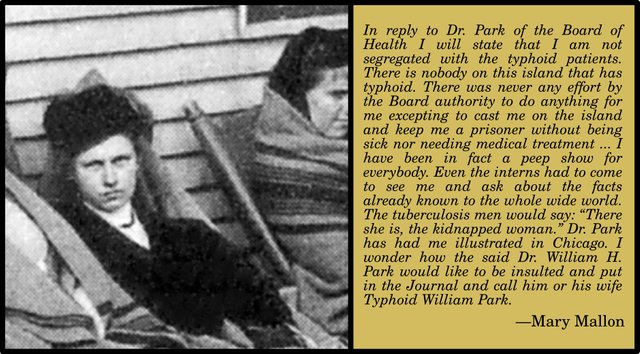
- Why was Typhoid Mary such a threat?
She wasn’t. That’s fake history. The theory of asymptomatic infection—the official narrative claims that Mary Mallon was an asymptomatic carrier of typhoid fever—makes no sense. According to mainstream germ theory, if you are asymptomatic, this means your immune system is not fighting the pathogen with which you are infected. If that is the case, then the pathogen will quickly kill you. Mary Mallon was asymptomatic because she was not ill. She was not ill because her terrain was healthy. She remained healthy when unhealthy people around her succumbed to typhoid, and for this she was victimized. This victimization continues to this day. Now she is slandered with the name super spreader—another of modern medicine’s myths.
- Would you be happy to be operated on by a surgeon who sharpened his knife on the sole of his shoe—as they used to do?
No. If he did he might introduce into my body bacteria that do not belong there. Once again, such bacteria are not pathogens, hoping to infect me. I would also not be happy to be operated on by a surgeon who cleaned his scalpel by dousing it in bleach, but bleach is not a germ.

- How come smallpox was conquered not by vaccines—as the drug companies would have you believe—but by quarantine?
Smallpox has never been conquered. Like polio, its name was simply changed to create the impression that it had been eradicated.
- Why did operating theatre mortality rates decline when surgeons started to wash their hands? What about Semmelweiss [sic]?
The Hungarian physician Ignaz Semmelweis was struck by the discrepancy between the incidence of puerperal fever in two obstetrical wards in the Vienna General Hospital: one in which doctors who routinely worked on cadavers delivered the babies without first washing their hands, and one in which the babies were delivered by midwives. Childbirth mortality among the mothers was three times as high in the doctors’ ward as in the midwives’ ward, but after Semmelweis introduced the practice of handwashing before delivery, the mortality rate in the doctors’ ward plummeted.
Once again, this is to misinterpret what germ theory entails. The doctors were probably transferring bacteria that decompose dead bodies to the mothers, where these bacteria had no business being. And it is hardly surprising if they caused harm and death to some women whose bodies were under the severe stress of childbirth at the time. But to call these bacteria pathogens is another misuse of the term. The doctors were poisoning the mothers. No pathogens were preying upon them.
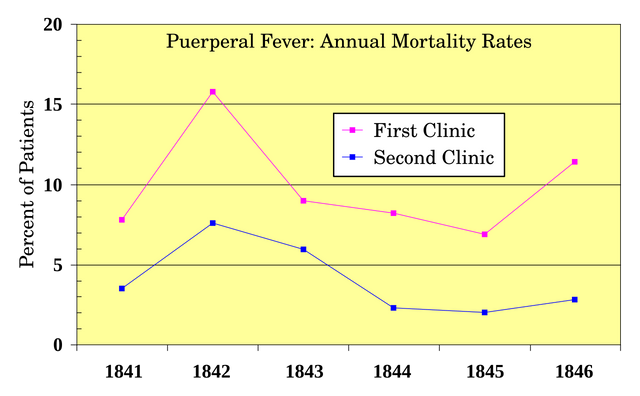
Note, however, that the figures Semmelweis compiled do not paint the simplistic view germ theorists would have us believe. In the doctors’ ward in the Vienna General Hospital the maternal mortality rate from 1841 through 1846 fluctuated from 6.9% to 15.8%. This is certainly higher than the rate in the midwives’ ward: 2.0% to 7.6%. But even in the worst year, 1842, more than 84% of the women treated by doctors with dirty hands survived. What’s more, the fluctuations in the two mortality rates mirror each other. 1842 was the worst year for both wards, while 1845 was the best year for both wards. Why should this be the case if the only crucial difference between the two wards is the spreading of germs from human cadavers. Clearly, there is much more going on here than the simple spreading of germs by dirty hands.
These responses are only preliminary, and wholly inadequate to change Vernon Coleman’s mind. I accept that. But I intend to research each and every one of these subjects in an attempt to get to the bottom of this important question.
And that’s a good place to stop.
References
- René Jules Dubos, Second Thoughts on the Germ Theory, Scientific American, Volume 192, Number 5, Gerard Piel, New York (1955)
Image Credits
- COVID-19 Poster: © 2021 Dublin Region Homeless Executive, Fair Use
- Don’t Let Them Kill Kids: fezailc (photographer), Pixabay, Public Domain
- Mary Mallon (Typhoid Mary): The New York American, 20 June 1909, Public Domain
- Human Head-Louse: © Gilles San Martin (photographer), Creative Commons License
- A Scanning Electron Micrograph of Vibrio cholerae: Louisa Howard (scanning electron microscopist), Public Domain
- Necrotizing Fasciitis: © Piotr Smuszkiewicz, Iwona Trojanowska & Hanna Tomczak, Late Diagnosed Necrotizing Fasciitis as a Cause of Multiorgan Dysfunction Syndrome: A Case Report, Cases Journal, Volume 1, Article Number 125, BioMed Central (2008), Creative Commons License
- René Jules Dubos: © Ingbert Grüttner (photographer), Fair Use
- John Snow: Anonymous Autotype of an Anonymous Presentation Portrait (1856), Public Domain
- Mary Mallon: Anonymous Photograph, United States National Library of Medicine, Bethesda, Maryland, Public Domain
- Smallpox : Monkeypox : Chickenpox: Centers for Disease Control and Prevention, Public Health Image Library (smallpox), Public Domain : Associated Press (monkeypox), Fair Use : Centers for Disease Control and Prevention, Public Health Image Library (chickenpox), Public Domain
- Annual Mortality Rates (Vienna General Hospital): Puerperal Fever Annual Mortality Rates for the First and Second Clinic at the Vienna General Hospital 1841-1846, Power.corrupts (creator), Public Domain
Video Credits
- “Flesh-Eating” Bacteria: © SciShow, Fair Use
- Germ Theory vs Terrain Theory: © Sam Bailey, Fair Use
Online Resources
